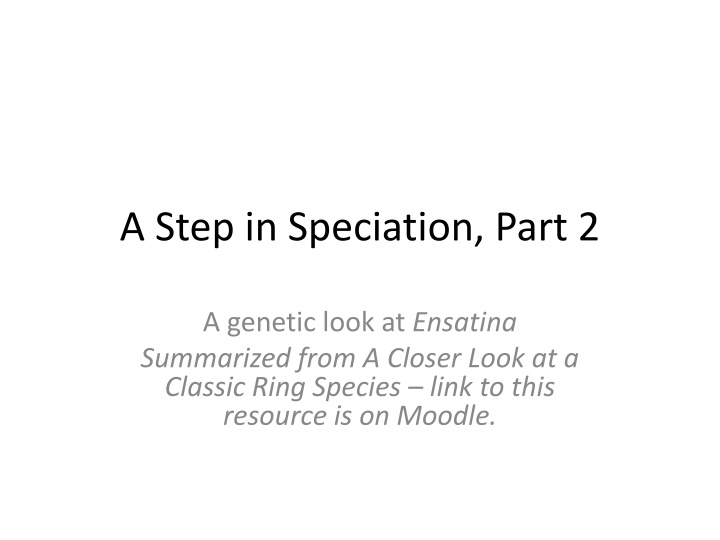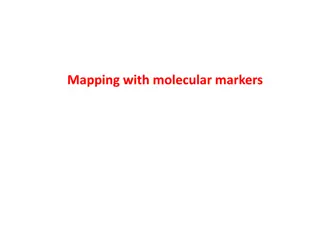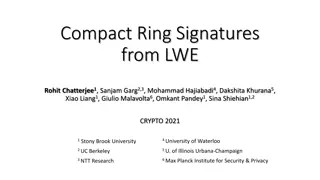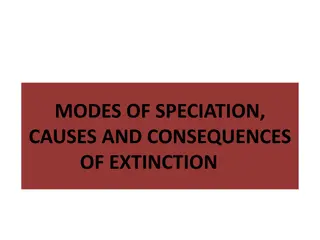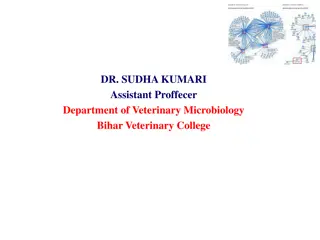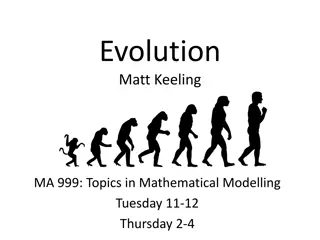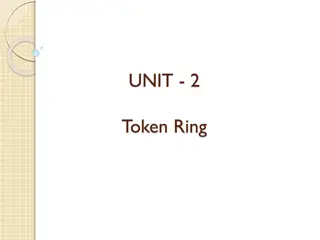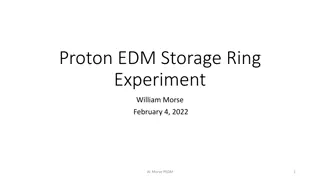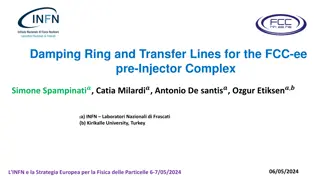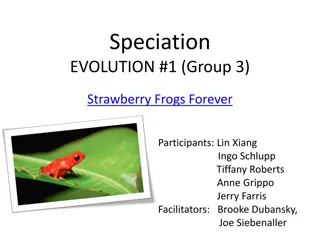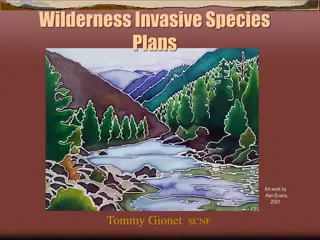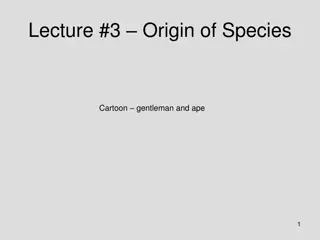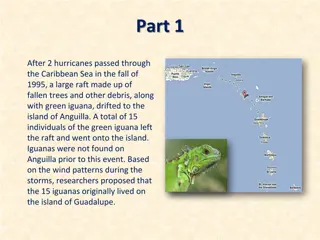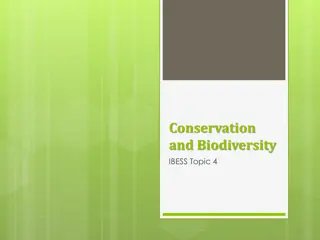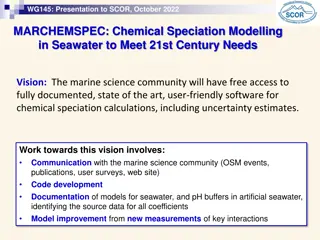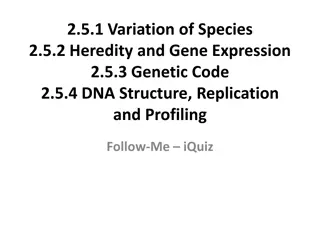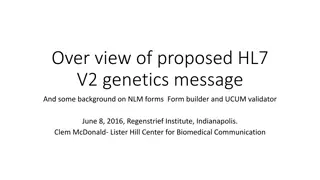Genetic Insights into Ensatina: A Study of Ring Species Speciation
Genetic analysis of Ensatina populations in California by Tom Devitt and team revealed complex groupings challenging previous taxonomic classifications. Hybridization patterns and hypotheses are explored, shedding light on post-mating isolation mechanisms. The study utilizes mitochondrial DNA sequencing due to Ensatina's large genome size. Results suggest potential misclassification of subspecies and raise questions about the true nature of these populations.
Download Presentation

Please find below an Image/Link to download the presentation.
The content on the website is provided AS IS for your information and personal use only. It may not be sold, licensed, or shared on other websites without obtaining consent from the author.If you encounter any issues during the download, it is possible that the publisher has removed the file from their server.
You are allowed to download the files provided on this website for personal or commercial use, subject to the condition that they are used lawfully. All files are the property of their respective owners.
The content on the website is provided AS IS for your information and personal use only. It may not be sold, licensed, or shared on other websites without obtaining consent from the author.
E N D
Presentation Transcript
A Step in Speciation, Part 2 A genetic look at Ensatina Summarized from A Closer Look at a Classic Ring Species link to this resource is on Moodle.
The story so far We ve looked at Robert Stebbins data from the 1940s and 50s on Ensatina escholtzii subspecies in California. The observational data led to a new question: do these Ensatina populations form a ring species?
The work of Tom Devitt It wasn t until DNA analysis became available that the Ensatina question could be addressed again. Tom Devitt and his team looked at DNA in Ensatina from the west coast to see what new information they could find.
Why mitochondrial DNA? Turns out that Ensatina has a huge genome, roughly six times larger than the human genome, and with multiple gene repeats. Mitochondria have their own DNA apart from an organisms nuclear DNA. Mitochondrial DNA is shorter and easier to sequence.
Results: Its complicated! The current interpretation shows that Ensatina groups are more complex than previously thought. Some subspecies may need divided or perhaps these aren t subspecies at all.
What about hybrids? If Ensatina forms a ring, can species in southern California, where the ends meet, hybridize? In the 60 s, one of Stebbins students had found some Ensatina in this area that appeared to be hybrids. However, the two species don t consistently hybridize in all places where they are found together. Why?
Hybrid hypotheses Devitt formed three hypotheses to explain the inconsistent hybridization: The two subspecies have difficulty recognizing each other as mates, due to different coloration or different pheromones (behavioral isolation). The two subspecies are reproductively incompatible (post-mating isolation mechanisms). The two have different habitat preferences, so they rarely meet (ecological isolation).
Post-mating isolation? Dewitt is trying the post-mating isolation hypotheses by bringing the two subspecies together in the lab. Results so far are inconclusive. Only a few Ensatina bred, but was it because they typically do not interbreed, or because conditions were not right?
Ecological isolation? The ecological isolation hypothesis is being tested with the aid of satellite photos of the habitat. Dewitt hopes to find out how much intermixing is possible between the two subspecies.
Your Task: Between now and next class meeting: Download and print the A Step in Speciation, Part 2 worksheet. Click on the link to A Closer Look at a Classic Ring Species. Read the material on the web site. Answer the questions on the worksheet. Bring these to class to discuss next time.
